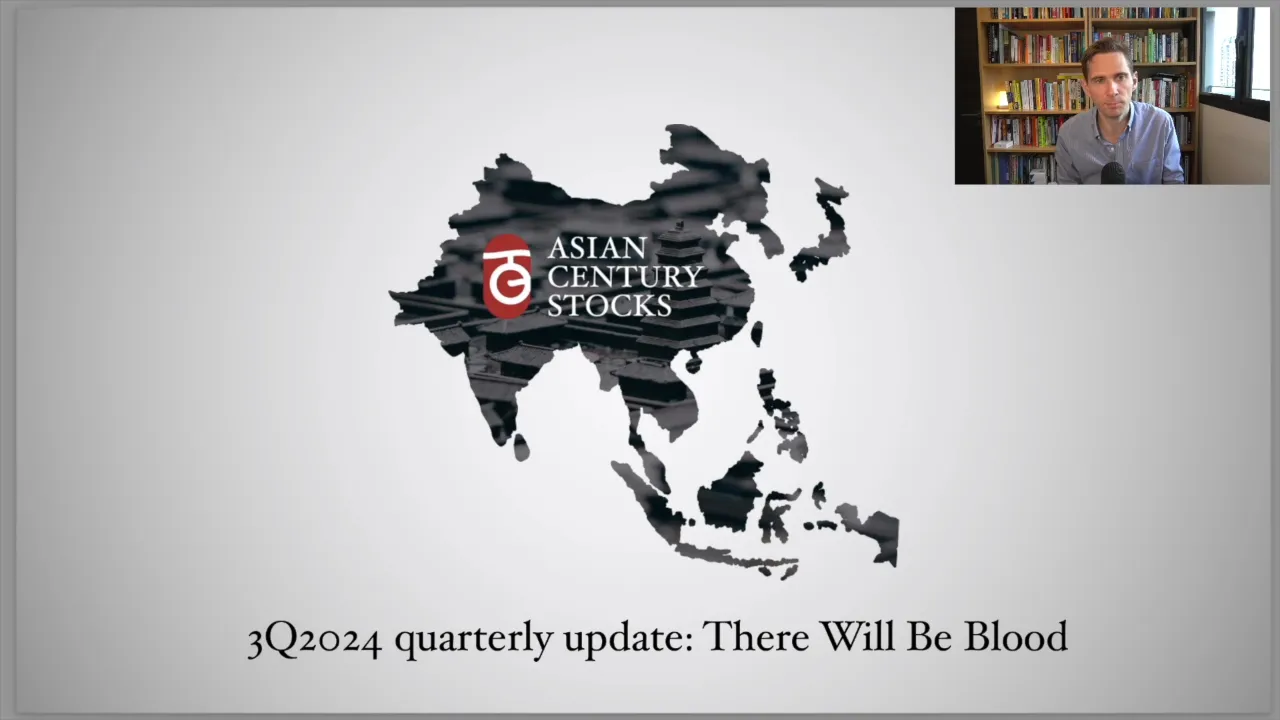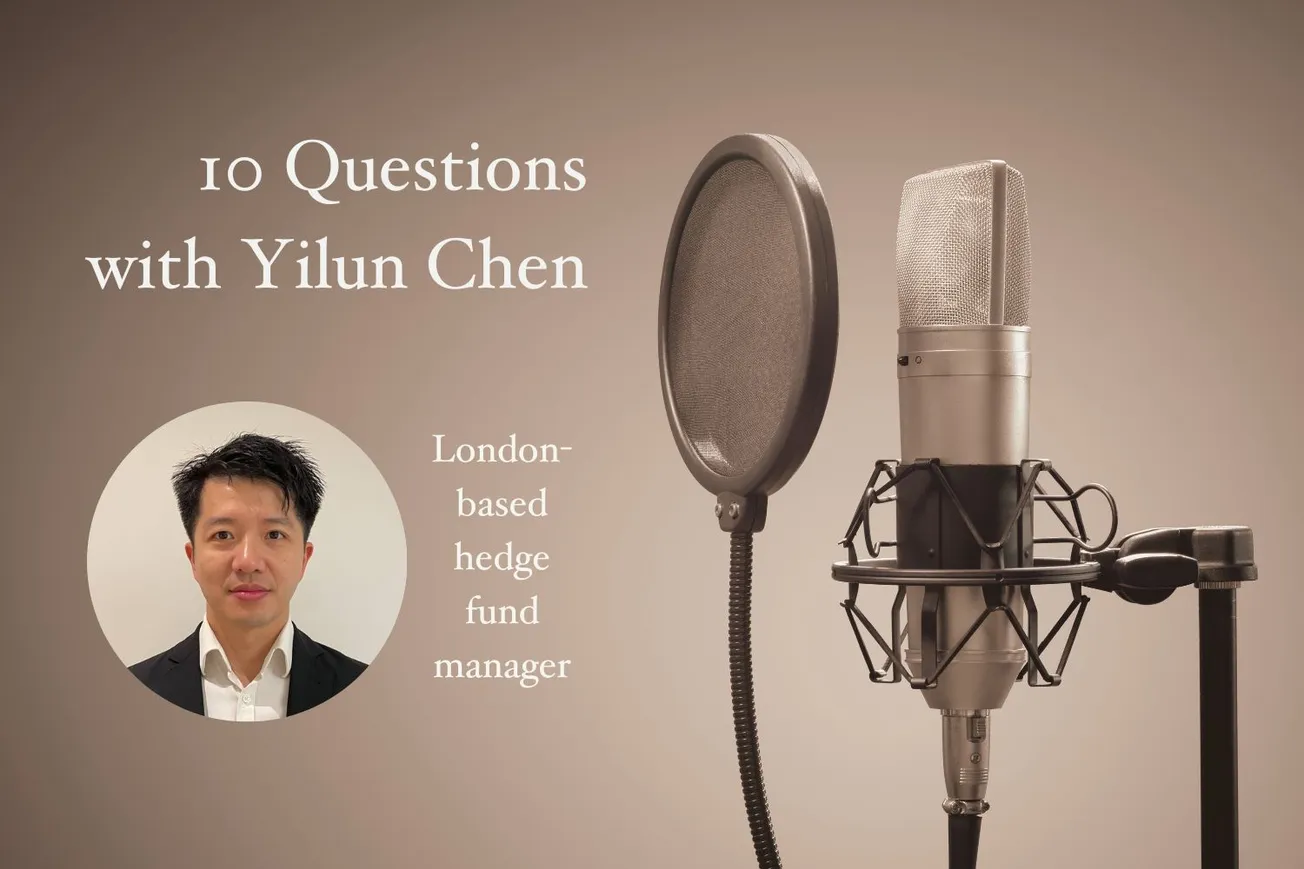Table of Contents
Disclaimer: Asian Century Stocks uses information sources believed to be reliable, but their accuracy cannot be guaranteed. The information contained in this publication is not intended to constitute individual investment advice and is not designed to meet your personal financial situation. The opinions expressed in such publications are those of the publisher and are subject to change without notice. You are advised to discuss your investment options with your financial advisers. Consult your financial adviser to understand whether any investment is suitable for your specific needs. I may, from time to time, have positions in the securities covered in the articles on this website. This is not a recommendation to buy or sell stocks.

I put together a presentation discussing recent events in Asia and how I look at the broad picture for equities in the region. Here are my key conclusions from the above video presentation:
1. The case for Asia
Asian equity markets remain relatively inexpensive. There’s been no real outperformance, no froth, and plenty of opportunities, in my view.
Typically, Asian equities tend to outperform in periods of dollar weakness. We’ve recently seen the DXY index break down, which could herald greater flows to international markets outside the US.
I think the US presidential election in November 2024 will be important because Donald Trump is openly advocating a weaker dollar and lower interest rates. If US interest rates indeed start to drop, we should see the dollar weaken sequentially.
Out of the Asian equity markets, I’m seeing particular value in Hong Kong, the Philippines, and Singapore. These markets trade at 10-12x P/E ratios. While the economic backdrop is mixed, there are always some companies whose fundamentals are trending in the right direction.
2. Japan carry trades partially unwound
It’s obvious that the Japanese yen is cheap. When I travelled to Tokyo a few weeks ago, I was shocked by the US$3 lunch bowls and the US$100 hotel rooms. A studio apartment costs no more than US$700 per month.
In late July this year, the Bank of Japan raised its short-term benchmark rate to 0.25% and said it would reduce its balance sheet. This event wreaked havoc in markets, with the yen strengthening 10% in days and the Nikkei crashing before staging a partial recovery.
The narrative that emerged was that we had seen a forced unwind of carry trades funded by borrowing in the Japanese yen. There were also rumors that a major institutional investor had lost many billions of dollars in a matter of days.
But in any case, the weakness of the Japanese yen has fundamentally been due to the interest rate differential between Japan and the rest of the world. While that differential remains high, it is clear that at least the US-Japan rate differential has started to narrow. And that means that a USDJPY exchange rate of 162 will probably mark the bottom for the yen.
The driver of this future strengthening is likely to come from a lower Fed Funds rate.
- The US job market is starting to deteriorate. Job losses typically precede recessions as laid-off individuals stop spending on discretionary items.
- It’s also becoming clear that inflation is no longer much of an issue. CPI ex-shelter is increasing at just 2%, which is in line with the target. Since the shelter component has an 18-month lag, we should see headline CPI drop to that level by April 2025.
The implications of a stronger yen probably mean that export-heavy indices like the Nikkei 225 will probably underperform. Meanwhile, local services companies and importers are likely to benefit from a stronger yen if and when the US-Japan interest rate differential continues to narrow.
3. Deflation in China is getting serious
Money supply metrics for the People’s Republic of China continue to weaken. Year-on-year growth in total social financing and bank loan growth have decelerated throughout the past three years, and this trend seems to be continuing.
Policymakers, most importantly Xi Jinping, have publicly stated that he does not want to stimulate the economy by offering cash to consumers. Instead, credit is increasingly directed towards manufacturing in the hope that it will improve the Chinese economy's competitiveness.
But excess capacity is pushing prices lower and the PRC is now experiencing full-on deflation. Government bond yields are now getting closer to 2%, suggesting weakening nominal growth. The GDP deflator has now been negative for 4 quarters in a row.
One reason for the current weakness in the Chinese economy is an accelerating decline in property prices, not unlike Japan after the bubble burst in 1990. Just like in Japan, banks in China assess borrower creditworthiness based on the amount of collateral given, and such collateral is typically property. Now that property prices are weakening, creditworthiness is taking a hit, causing lenders to become more cautious.
Falling property prices also lead to a negative wealth effect. In second-quarter earnings calls, luxury goods companies report weakness in the Chinese market as customers don’t feel as rich as they once did.
So, from a top-down point of view, the positives are few and far between. Investors are taking the queue and moving their capital to other emerging markets, including India and South Korea.
4. Electric vehicles may not win
I’m making a case that fully electric vehicles are simply overhyped at this stage, and the entire industry is set up for disappointment. The popularization of electric vehicles has been driven by government subsidies rather than consumer enthusiasm.
While it is true that Chinese vehicle exports are booming, most of them are internal combustion engine vehicles. From my understanding, the data also includes exports of foreign brand vehicles, such as Toyota and Tesla, from factories in China. So, I’d be cautious in concluding that the boom in exports that we’ve seen is necessarily due to a renaissance in the popularity of Chinese passenger vehicles.
Instead, data from Thailand, Belgium, Peru, and elsewhere show that electric vehicles are proving difficult to sell and are piling up as inventory on dealer lots.
The fundamental problem is that electric vehicles don’t really have a killer app other than high torque. They cost at least US$5,000 more to produce than hybrids, and the batteries depreciate much faster. Long charging times can be alleviated through overnight charging, but such charging stations are not always available and costly to install. The range issue also produces anxiety.
The CO2 emissions profile is also in question, with only a modest improvement compared to hybrids and reliant on the grid's electricity sources.
What seems clear to me is that consumers in China and beyond are increasingly favoring plug-in hybrids. If so, expect metals such as platinum and palladium to be reassessed in a more positive light. And hybrid-focused companies like Toyota and its joint venture partner Astra International would be well-placed to meet that demand.
5. Malaysia is the prime FDI beneficiary
Over the past half a century, Asia has clearly become the manufacturing hub of the world. East Asia’s infrastructure is excellent, and populations tend to be highly educated and hard-working.
I also think that when supply chains are complex, distances matter. So if an iPhone is assembled in a Foxconn factory in Dongguan and requires 1,000 components, it certainly helps that those components can be shipped in a matter of days from nearby, including Taiwan, South Korea, and Japan.
Therefore, manufacturing is unlikely to move out of the region completely. But as China continues to turn inwards, multinational companies are directing greenfield investment elsewhere, most importantly to Southeast Asia and India.
I want to make the case that Malaysia is particularly well-placed to serve as a manufacturing hub for European and American corporations, especially those operating in the semiconductor or electronics industries. Malaysia has excellent infrastructure, an English-speaking population, and a weak currency, making labor costs reasonably competitive.
We’ve already seen record-high greenfield foreign direct investment in Malaysia since 2022, and this trend is likely to continue. All that capital expenditure will likely benefit the local economy, especially near key manufacturing hubs around Penang and the Klang Valley.
6. Vietnam is turning authoritarian
On 3 August 2024, the Communist Party of Vietnam welcomed new general secretary Tô Lâm.
The previous General Secretary, Nguyễn Phú Trọng, had been in charge since 2011 and led the party in a more ideological direction, with the party reasserting control. The end of his reign was marked by a three-year anti-corruption campaign that was no doubt meant to consolidate control over the party and the government.
Tô Lâm is likely to represent a further shift towards party control. He comes from a public security background and does not seem driven by ideology. While some assume he’ll take a more pragmatic approach, other analysts worry that under Tô Lâm, Vietnam will become more authoritarian, in line with the precedent set by the People's Republic of China’s Xi Jinping.
Tô Lâm is on good terms with both Putin and Xi. He’s now publicly espoused Xi’s ambition of creating a partnership of countries under the banner of a “community of a shared future.” That leads me to think that under Tô Lâm, Vietnam will likely end up partnering with the Russia-Iran-China axis of countries.
If we do end up in a new Cold War, which is becoming increasingly likely, we might one day see controls on the flow of individuals and capital across borders. My personal preference is to invest at home or in countries similar to my own to reduce the risk that capital will one day get stuck in a hostile, foreign jurisdiction.

Click the “Download” button below to access the full PowerPoint presentation:
If you like this content and would like to join Asian Century Stocks, click to subscribe:








